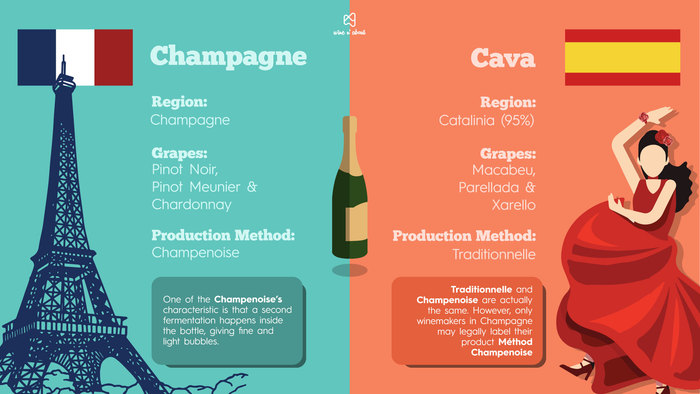Many of us would like to know more about Cava and the difference between Cava and Champagne?
Firstly, it is necessary to know that Champagne is generally accepted to have been invented in Champagne, France. Real “Champagne” only comes from the actual Champagne region in France and follows the traditional method called “Champenoise” for producing it. In this method, the bubbles in Champagne occur naturally from the wine continuing to ferment in the bottle, not from some carbonation method of adding CO2 under pressure.
There are 3 traditional grapes used in Champagne, which can be used 2 or 3 together. The basic, traditional blend of Champagne is of Pinot Noir, Pinot Meunier, and Chardonnay. They are grapes that are indigenous to the Champagne region of France.
As for Cava, the wine is originated in Spain and modelled after Champagne in France. It uses mainly traditional, indigenous Spanish grapes and some famous grape variety such as Chardonnay. The other important point about Cava is that it is made in the Champagne Method. However only producers in the Champagne region may use the term “Méthode Champenoise,” so in Spain it is known as the “Traditional Method”.
Cava is probably the most Champagne-like sparkling wine outside of France. However, Cava is truly Spanish, and it is a good value for the price and it can be appreciated for its own distinctiveness. Let’s now check out this educational key visual for your better understanding of the difference between these two wines!




 0
0